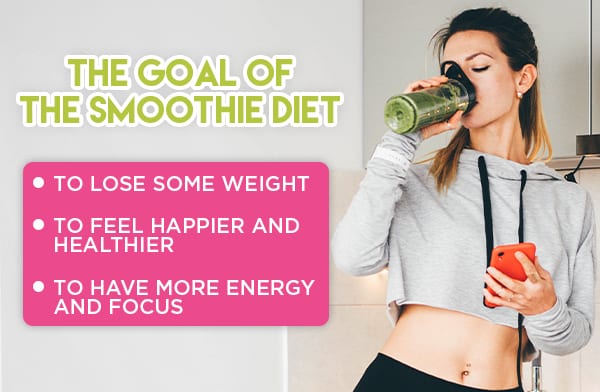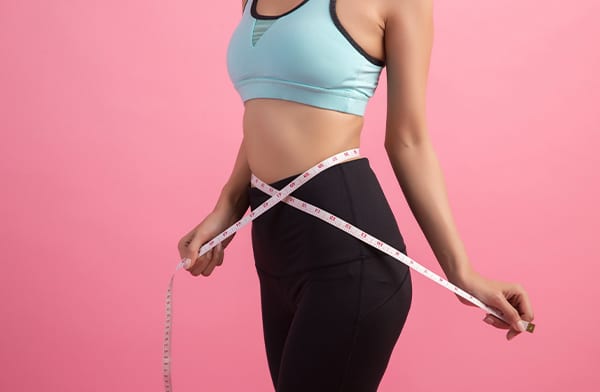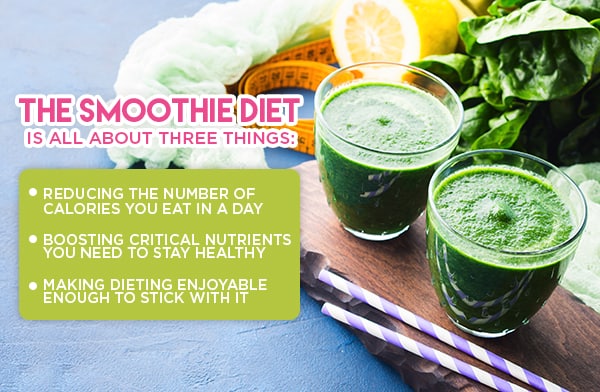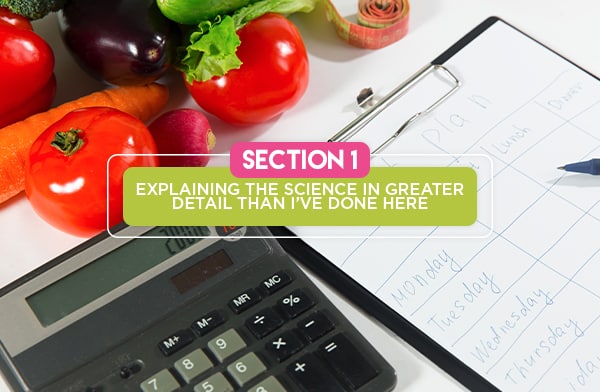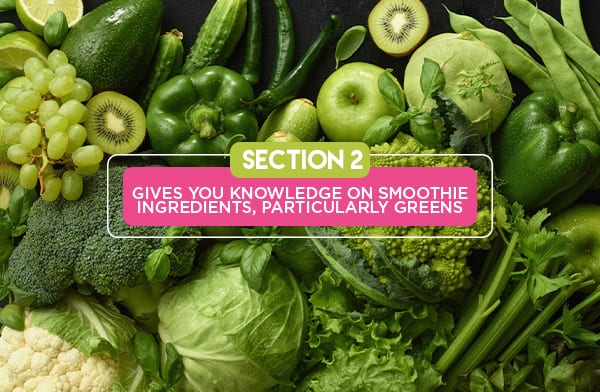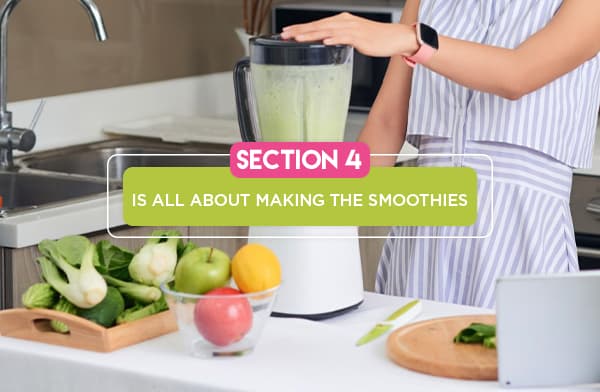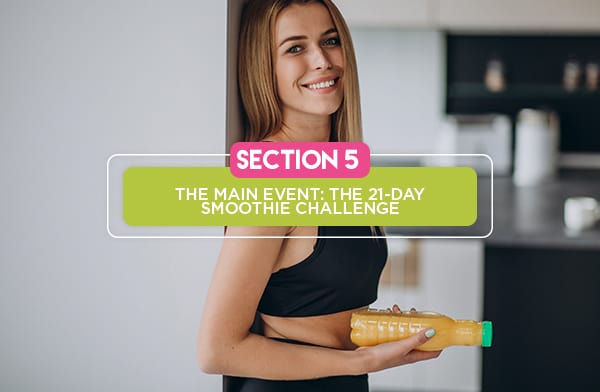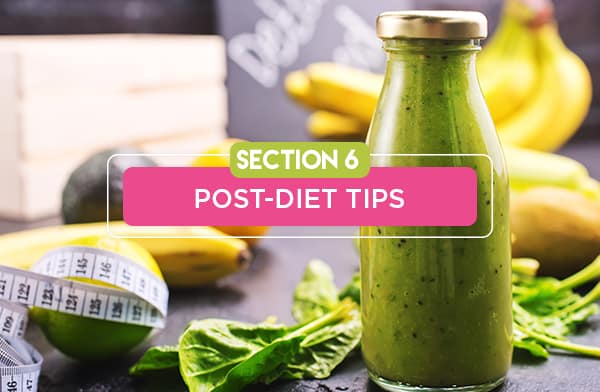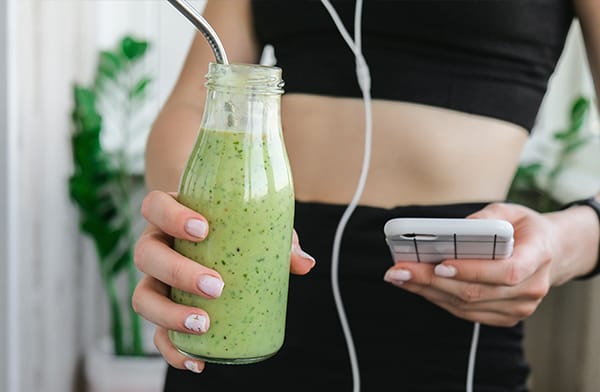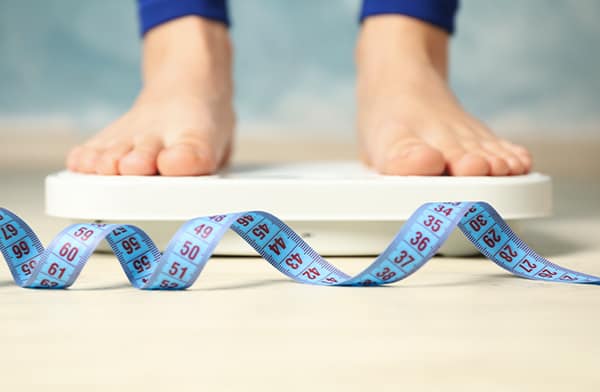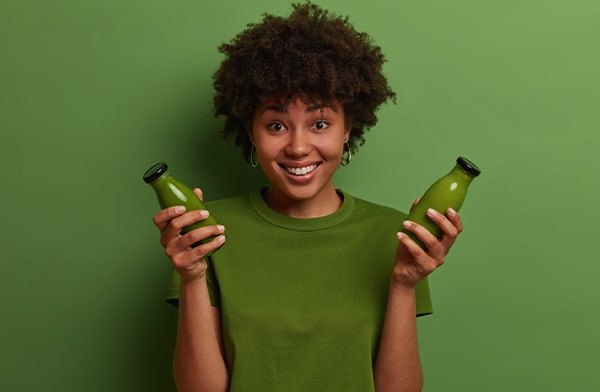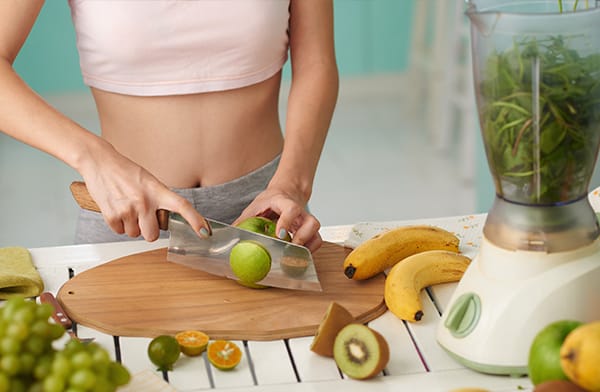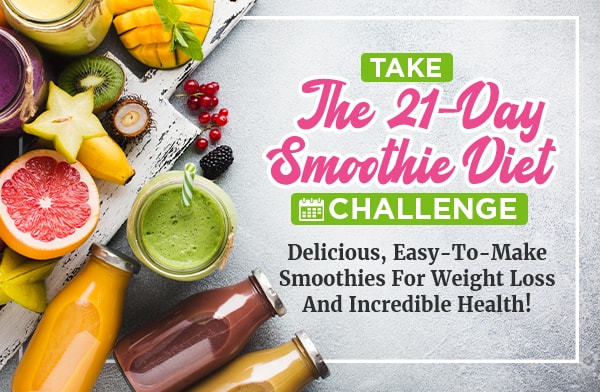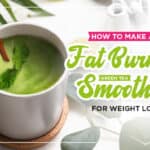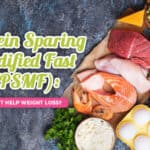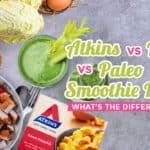Beginner’s Guide: How Does a Smoothie Diet Work?
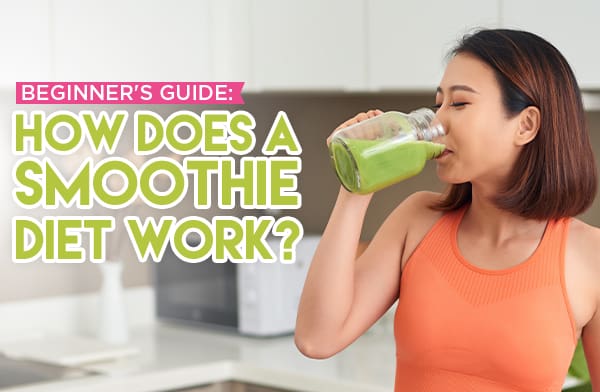
Hello and welcome, new friends and old followers. In the years that I’ve been promoting this smoothie diet, I’ve had a lot of questions about how it works. I explain it pretty well in the documents you get when you buy the package if I do say so myself, but I can understand not wanting to make a purchase for something you might not trust.
Today, I thought I would take the time to explain how a smoothie diet like mine works.
Let’s get started!
The Usual Disclaimer
Before we begin, I need to make my usual disclaimer.
Please note that while I am a nutrition expert, I am not a doctor. This program is not intended to diagnose, treat, cure or prevent any disease and is not intended to be a substitute or replacement for any medical treatment. If you have any pre-existing health conditions, please seek the advice of a healthcare professional before starting this program.
There we go. Feels good to get that out of the way, right? Now we can get to the real topic at hand.
The Goal of the Smoothie Diet
Let’s talk goals.
What do you want out of your life?
I don’t mean career, or family, or adventure. I mean with regards to your health. Most of you out there have the same goals.
- To lose some weight.
- To feel happier and healthier.
- To have more energy and focus.
All of these are controlled by underlying bodily functions, and all of them are affected by your diet.
The typical diet, both in America and many other parts of the world, is largely unhealthy. We eat too much meat and not enough fruit or vegetables. We eat too many processed ingredients and not enough whole foods. We eat far too much salt and sugar, and we’re often deficient in a few minerals or vitamins.
The goal of the smoothie diet is to help correct those deficiencies and excesses, help balance out your daily nutrition, and help get your health back on track. Lose weight, feel amazing, have more energy, and live your life to the fullest.
How Weight Loss Works
Weight loss can be mystifying. Everywhere you look, there are burly men and fit women hawking their branded supplements, workout programs, and insider advice. Who can you trust?
Let’s distill it all down to the simplest possible terms.
As far as science knows today, weight loss is almost entirely down to calories in, calories out. There are some confounding factors, like proper nutritional balance, insulin resistance, and genetic quirks that make it easier or harder to lose weight, but even those don’t change the core process.
If you eat more calories than you burn, your body has extra energy, and that energy is stored as fat throughout your body. If you burn more calories than you eat, your body draws on those stored resources, usually fat first, followed by protein. It’s not just about the carbs, or the fat, or the vitamins, or any one aspect of your diet.
There are two ways you can shift the balance in your favor. You can eat less, or you can burn more calories.
This is why the best weight loss programs have both a diet plan and a workout plan, by the way.
I’m a nutritionist, not a personal trainer. The Smoothie Diet reflects my knowledge and expertise and is primarily a diet plan. Any healthy dietary change will be more effective if you couple it with workouts, but I’m not here today to recommend a specific workout routine that will help you meet your goals.
Everyone’s body is different. Some people do better with high-intensity workouts, while others burn the most calories with endurance training or weight lifting. It’s important that you find the program that works for you.
The same holds true for diet, too. The Smoothie Diet is all about three things:
- Reducing the number of calories you eat in a day.
- Boosting critical nutrients, you need to stay healthy.
- Make dieting enjoyable enough to stick with it.
It’s not a crash diet, it doesn’t rely on supplements, and it doesn’t force you to stick with a rigid program or fail. It’s flexible, which is a critical component of every good weight loss program in my experience.
How the Smoothie Diet Works
The Smoothie Diet has six primary sections that I’ll review here:
Section 1 explains the science in greater detail than I’ve done here. I talk about BMI calculations, macronutrients, good and bad fats, the truth of carbs, and how weight loss works. I also teach you how to calculate both your current maintenance caloric intake and a caloric target to set to lose weight.
Section 2 gives you knowledge of smoothie ingredients, particularly greens. I’m a big fan of putting leafy greens in every smoothie, not just “green smoothies,” because they add a ton of nutrition without many calories, sugar, or flavor. They won’t make everything you drink taste like chewing on grass, as some supplements do. Instead, they just boost and add substance to your smoothies.
In this section, I also give you a few recommended tools like specific blenders I recommend, as well as general tips for getting the best produce for your smoothies. I always recommend that, whenever possible, you buy fresh produce rather than canned/frozen/preserved produce. Preserved produce requires preservatives, and it may be cooked in a way that removes some of the nutritional value as well. Fresher is better!
Finally, I will give you some tips on preparing certain kinds of fruits and vegetables for the best possible smoothie experience. Whether you’re storing the produce to make your smoothies fresh or storing your smoothies for days or weeks to come, I have ways to help.
Section 3 discusses ingredient replacements and swaps you can make. Can’t find fresh oranges? Don’t like bananas? Want something to sweeten your smoothie but don’t want to use sugar? I have options for you.
Section 4 is all about making the smoothies. In what order do you add the ingredients? How should you prepare your fruits and veg before using them? How can you adjust the consistency of your smoothie? I will answer all of your questions.
Section 5 is the main event: the 21-day smoothie challenge. I give you caloric goals, tips for making meals and snacks throughout the day, and, of course, smoothie recipes. I also give you flex days for those days when your cravings get to be too much or a special occasion means you can’t rely on smoothies. I’ve found that being needlessly punishing with failure to comply with a diet just makes people less likely to keep it up.
I have some sample meal recipes for your full meals, but the main content is the smoothie recipes themselves. I have a series of smoothie recipes to balance out your nutritional intake each week while keeping your total caloric content low.
Section 6 is post-diet tips. This is where I give you advice on how to continue the diet if you want to, what other programs you can try to augment your weight loss, and other options to follow up the diet. I also have an FAQ to answer all of your most common questions. Any that I don’t answer – feel free to ask me in the comments!
The full package also includes two additional documents: a quick start guide if you want to skip all of the groundwork and get to the diet, as well as a three-day “detox” program to help you reset your health with smoothies. It’s a lot harsher than the full smoothie diet, but that’s why it’s limited to three days.
How Long Does the Smoothie Diet Last?
Originally, the Smoothie Diet was a five-week program. Through feedback from my fans and through my own experiences, though, I decided this wasn’t where I wanted it to be. So, I pared it down. I removed two weeks from the program, so now it’s 21 days long. It also includes a “flex week” you can use, either as a warm-up, a cool-down or as a mid-program break.
That said, the smoothie diet is nutritionally balanced. As long as you eat a real meal once a day with a good source of protein, you can keep up the smoothie diet pretty much indefinitely. I would recommend that you check with a nutritionist or doctor every few months to make sure you do not accidentally forget a key micronutrient, vitamin, or mineral, but as long as you keep your diet in balance, you should be fine to continue as long as you like.
How long does it take to see results? 21 days!
Technically, you can see results as soon as a week after starting, but let’s be real here; unless you’re cutting out a ton of calories – to the extent of not eating at all for a day each week – you’re not going to be losing more than a pound or two each week. After just one week, you might have a weight difference, but it’s within the margin of error. For real results, you want to go for at least three weeks.
What Kind of Results Can You See?
There are two ways to answer this question.
In terms of pure weight loss, a lot depends on your previous diet and how much of a change you make, as well as any working out you do.
One pound of weight is around 3,500 calories. If you eat a moderately healthy diet, the Smoothie Diet might help you cut about 500 calories per day. That means, with no other changes, you’ll lose about one pound per week.
If your usual dinner was much larger and you cut it down as well, you might be able to operate at an even larger caloric deficit. At the same time, if you add in exercise, you can burn even more calories.
As you can see from testimonials on the Smoothie Diet page, I’ve had people get some astounding results. One person lost 8 pounds in the first week. Another lost 12 pounds across the full program. One lost 40 pounds by continuing the smoothie diet beyond the initial 21 days. It works!
Weight loss isn’t the only benefit. I’ve had quite a few people tell me that they only lost one or two pounds through the program, but they’ve noticed they have a lot more energy, better focus, and a better mood. That’s the healthier diet at work. Cutting out sugar and replacing it with healthier nutrients gives you a significant mental boost that can be difficult to measure but noticeable all the same.
Does the Smoothie Diet Have Risks?
Not really!
Okay, so that’s not strictly true. Every diet may have some risks for sensitive individuals with allergies:
- When you make a dramatic change to your diet, your body may feel “off” for at least a few days as you adjust to a different set of nutrients. In extreme cases, this can be almost like an illness, similar to the “keto flu.” The Smoothie Diet isn’t that extreme, but some people can experience some initial fatigue while it adjusts to your new intake.
- The recipes I list in the Smoothie Diet have a variety of fruits, vegetables, and other ingredients. This includes peanuts and tree nuts, as well as berries and veg. If you have any allergies to any of these ingredients, obviously, you’ll have a reaction if you eat them. Luckily, that’s why I provide a list of substitutions.
- There may be a period of adjustment for you while your body sorts out digestive issues. For many people, the Smoothie Diet is a boost to your fiber intake, which messes with your digestion and bowel movements. Don’t worry; it will settle down.
Finally, some people find that once they start a diet, other health issues become more obvious. What you might have thought of as simple chronic fatigue might have been something worse lurking where you couldn’t see it. If that’s the case, you’ll need to see a doctor about it. That said, this isn’t a side effect of the diet. You already had that issue and just couldn’t see it until healthier habits revealed it to you.
How Do I Get Started?
All you need to do to start with the Smoothie Diet is click this link! The diet program is simple and risk-free. If you’re unsatisfied for any reason, just drop me a line for a full refund. Just to warn you, though: very few people need to take me up on the offer. I believe you’ll be satisfied with what you get, so give it a try!

